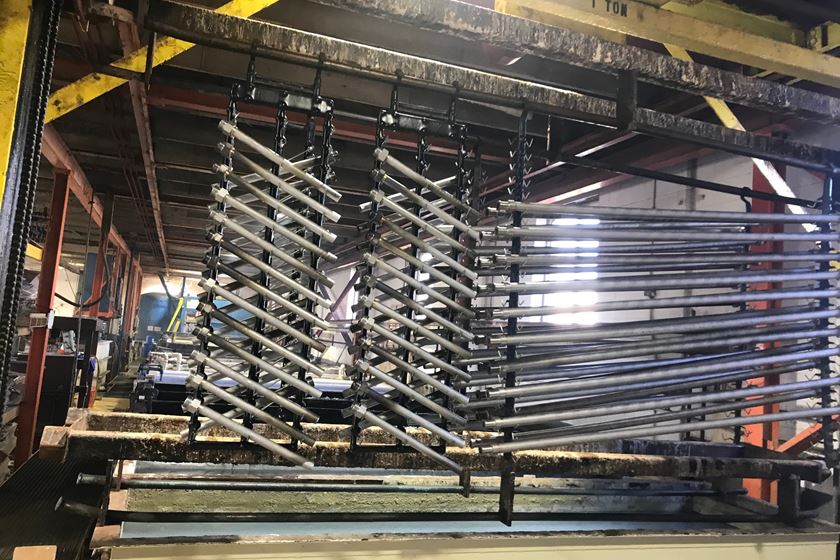Congress Passes Bipartisan Infrastructure Bill
The new bill contains $550 billion allotted for traditional or physical infrastructure.
#regulation
On November 6, 2021 Congress passed a $1.2 trillion bipartisan infrastructure bill. The 2,702-page bipartisan bill contains $550 billion in new spending for traditional or physical infrastructure. The $1.2 trillion figure comes from including additional funding normally allocated each year for highways and other infrastructure projects. The new spending includes the following investments.
$110 billion for roads and bridges. In addition to construction and repair, the funding also helps pay for transportation research at universities, funding for Puerto Rico’s highways, and “congestion relief” in American cities.
$66 billion for railroads. Funding includes upgrades and maintenance of America’s passenger rail system and freight rail safety, but nothing for high-speed rail.
$65 billion for the power grid. The bill would fund updates to power lines and cables, as well as provide money to prevent hacking of the power grid. Clean energy funding is also included.
$65 billion for broadband. Includes funding to expand broadband in rural areas and in low-income communities. Approximately $14 billion of the total would help reduce Internet bills for low-income citizens.
$55 billion for water infrastructure. This funding includes $15 billion for lead pipe replacement, $10 billion for chemical cleanup, and money to provide clean drinking water in tribal communities.
$47 billion for cybersecurity and climate change. The Resilience Fund will protect infrastructure from cybersecurity attacks and address flooding, wildfires, coastal erosion, and droughts along with other extreme weather events.
$39 billion for public transit. Funding here provides for upgrades to public transit systems nationwide. The allocation also includes money to create new bus routes and help make public transit more accessible to seniors and disabled Americans.
$25 billion for airports. This allocation provides funding for major upgrades and expansions at U.S. airports. Air traffic control towers and systems would receive $5 billion of the total for upgrades.
$21 billion for the environment. These monies would be used to clean up superfund and brownfield sites, abandoned mines, and old oil and gas wells.
$17 billion for ports. Half of the funds in this category would go to the Army Corps of Engineers for port infrastructure. Additional funds would go to the Coast Guard, ferry terminals, and reduction of truck emissions at ports.
$11 billion for safety. Appropriations here are to address highway, pedestrian, pipeline, and other safety areas with highway safety getting the bulk of the funding.
$8 billion for western water infrastructure. Ongoing drought conditions in the western half of the country will be addressed through investments in water treatment, storage, and reuse facilities.
$7.5 bill for electric vehicle charging stations. The Biden administration asked for this funding to build significantly more charging stations for electric vehicles across the nation.
$7.5 billion for electric school buses. With an emphasis on bus fleet replacement in low-income, rural, and tribal communities, this funding is expected to allow those communities to convert to zero-emission buses.
What Was Not Included in the Bipartisan Infrastructure Bill
The so-called “social infrastructure” provisions were not included in this legislation. Congress is expected to take on these proposed provisions in a separate legislative package. Provided below is a summary of these provisions.
- $400 billion for childcare and universal preschool
- Family and medical leave
- $200 billion for Child Tax Credit and Earned Income Credit
- $150 billion for home care
- $150 billion for housing
- $40 billion higher education and workforce development
- $25 billion for the Small Business Committee
- $90 billion for equity and other investments
- $5 billion in supply chain investments
- $10 billion to support child nutrition
- State and Local Tax (SALT) deduction relief
- Agreement to lower prescription drugs costs
- $130 billion in ACA credits
- $35 billion Medicare hearing coverage
- $550+ billion for clean energy and climate
- Corporate alternative minimum tax
- $100 billion for immigration
- Medicare dental and vision benefits
- Free community college
- Billionaires’ income tax
The infrastructure bill and the projects to upgrade existing infrastructure and promote new initiatives and technologies could provide substantial opportunities for the surface finishing industry.
It is important that the industry continues to make efforts to position itself for success in these areas. NASF will continue to be engaged in the infrastructure process and provide updates to members.
If you have any questions or would like more information about the infrastructure legislation or possible opportunities for the surface finishing industry, please contact Christian Richter at crichter@thepolicygroup.com or Jeff Hannapel with NASF at jhannapel@thepolicygroup.com.
This update is courtesy of the National Association for Surface Finishing (NASF). For more information or to become a member, visit nasf.org.
RELATED CONTENT
-
How to Maximize Nickel Plating Performance
The advantages of boric acid-free nickel plating include allowing manufacturers who utilize nickel plating to keep up the ever-changing regulatory policies and support sustainability efforts.
-
Trivalent Chrome Overview
As the finishing industry begins to move away from the use of hexavalent chromium to trivalent chromium, what factors should finishers consider as they make new investments? Mark Schario, chief technology officer for Columbia Chemical offers a helpful overview of this complicated topic.
-
Selecting PPE for Your Paint Shop
Guidelines for determining the appropriate personal protective equipment for a painting operation.















